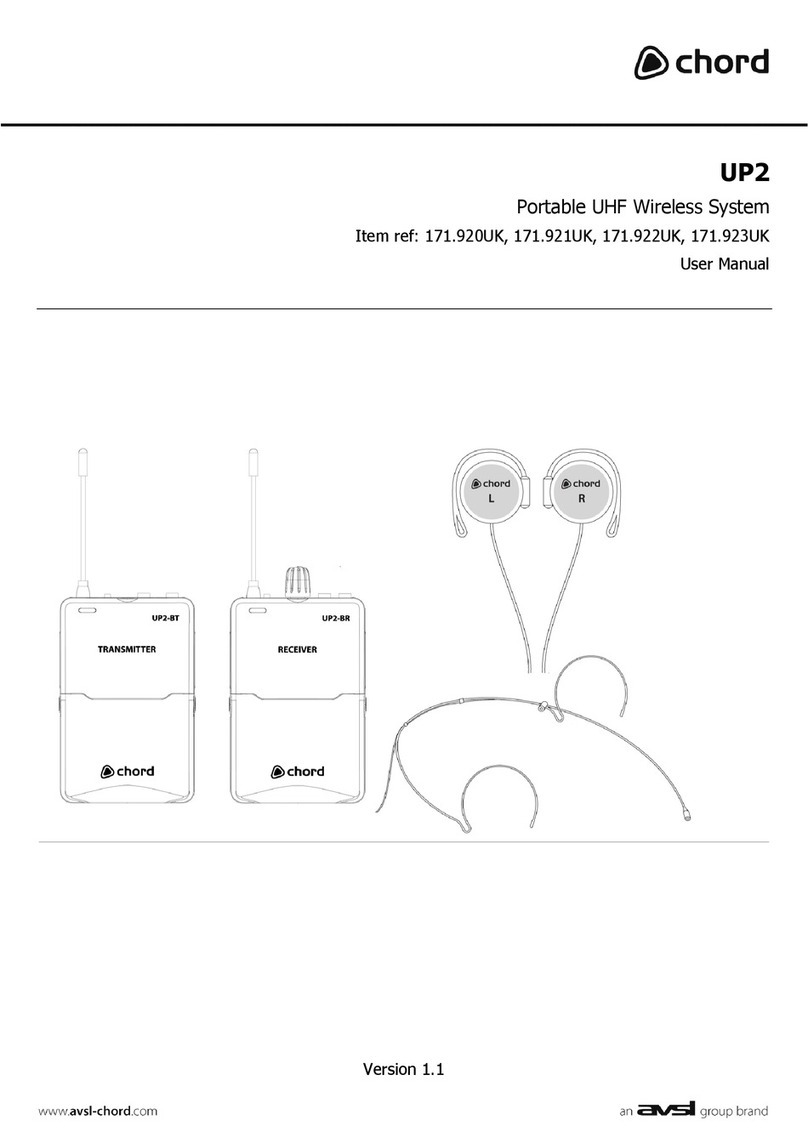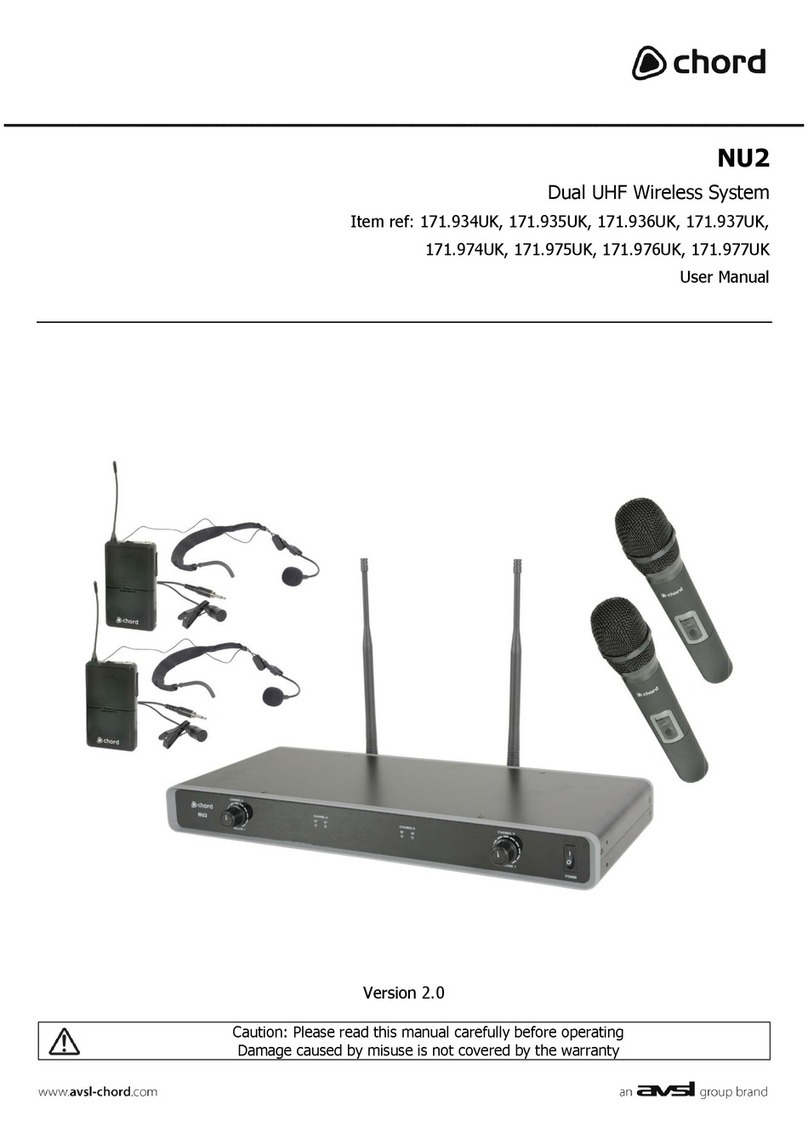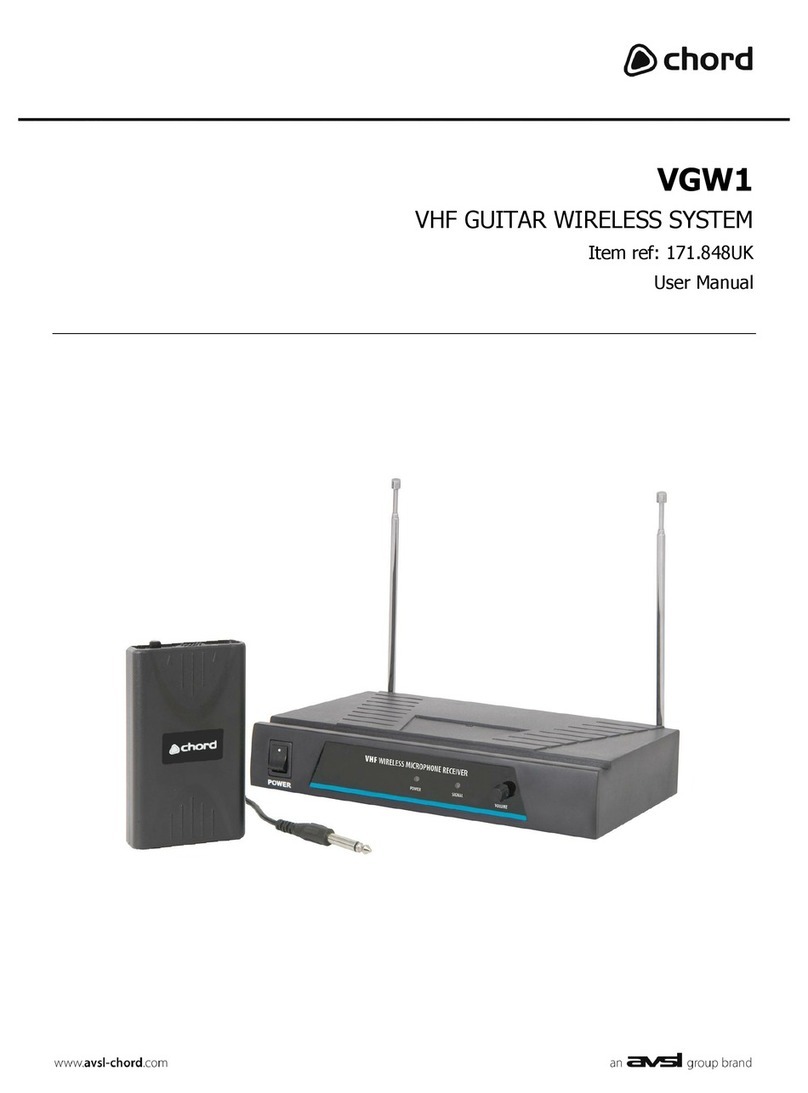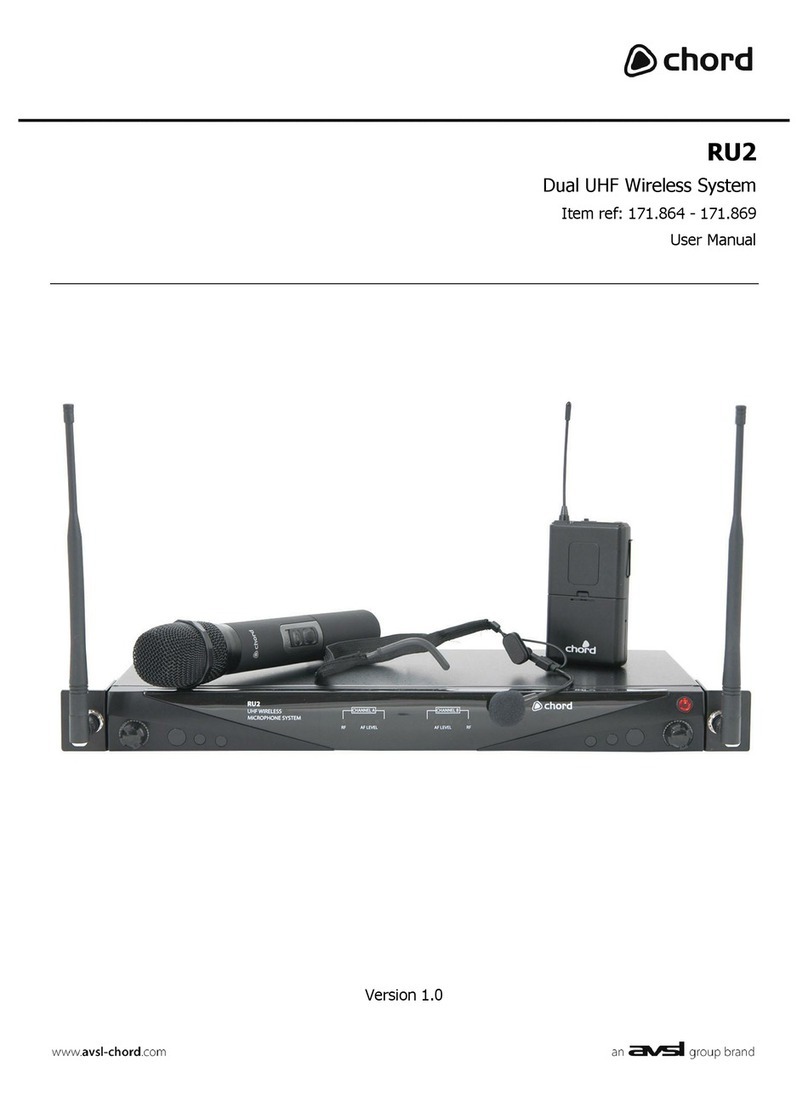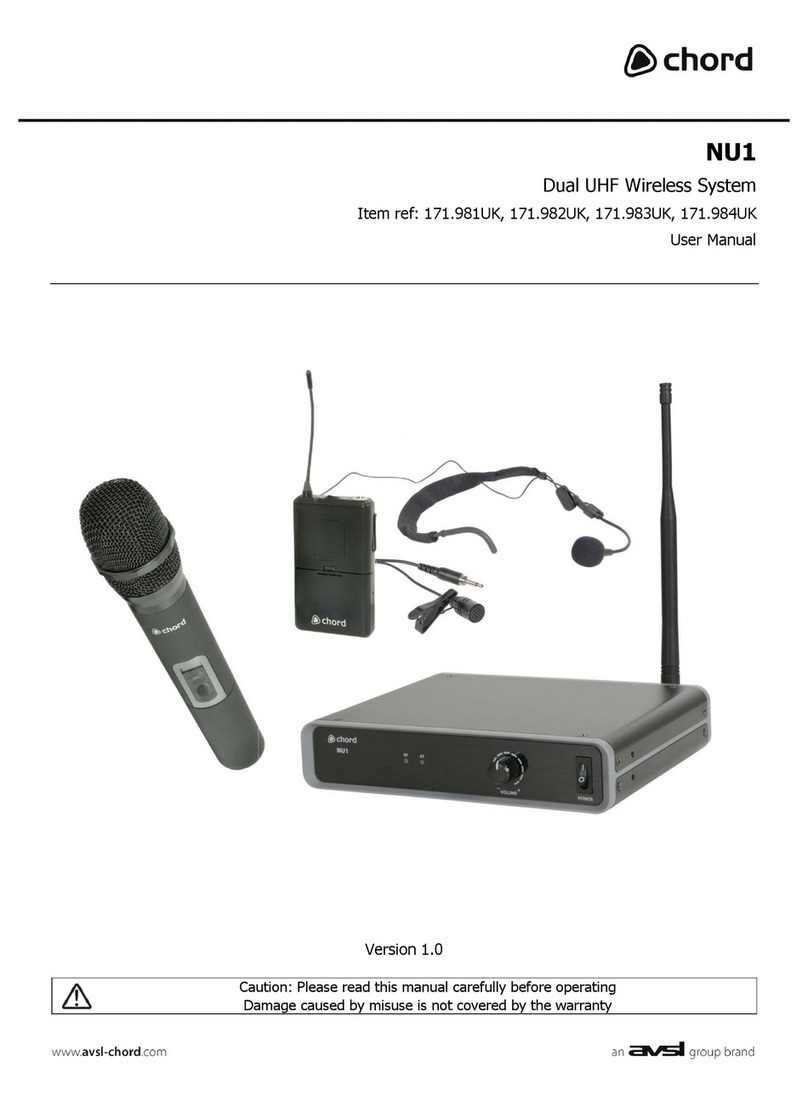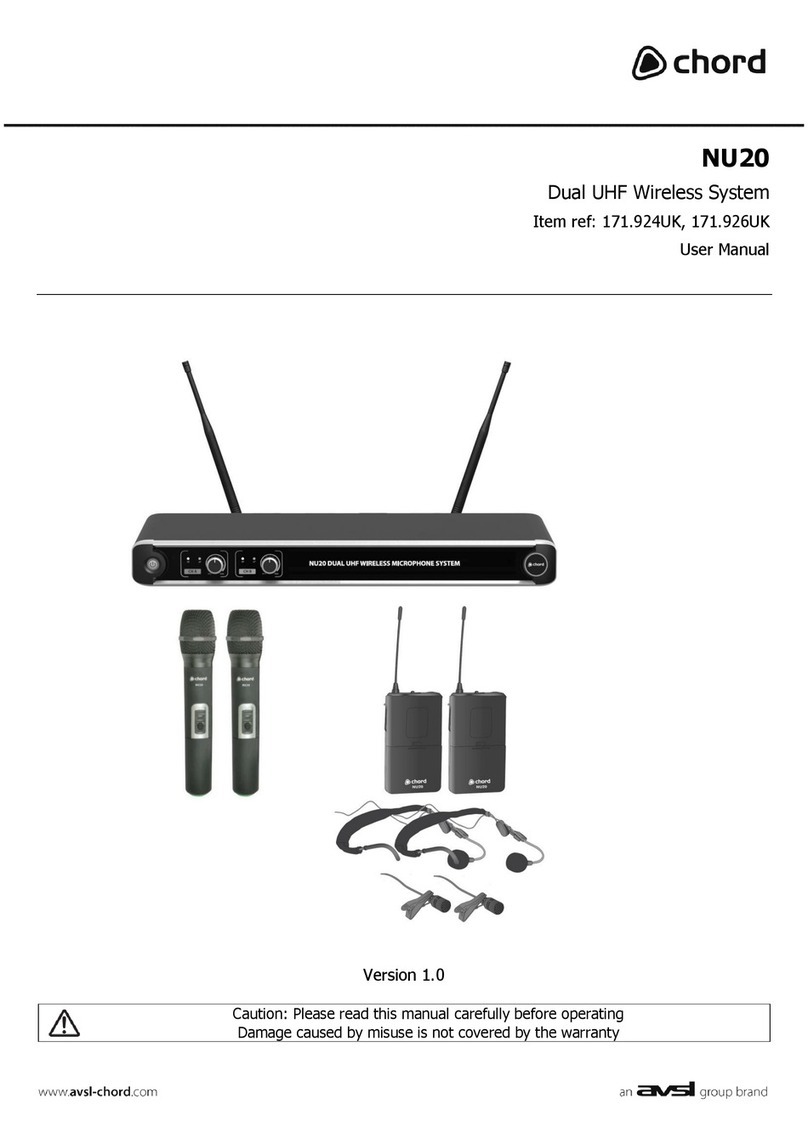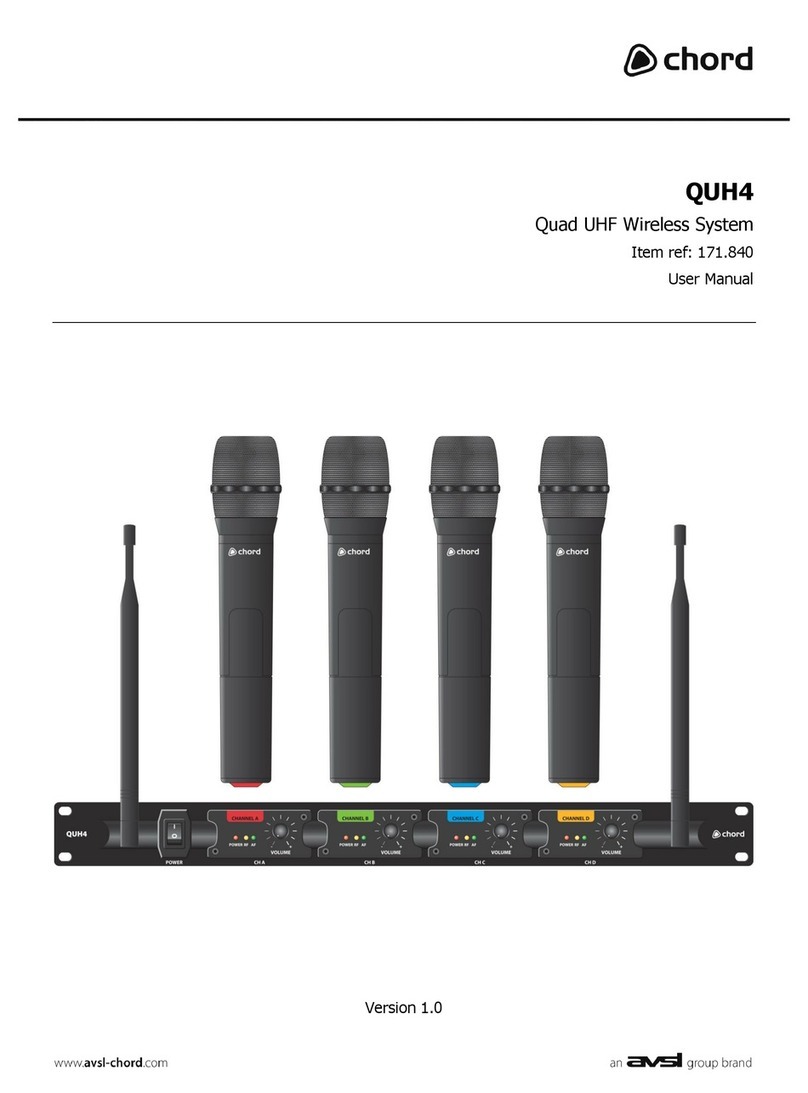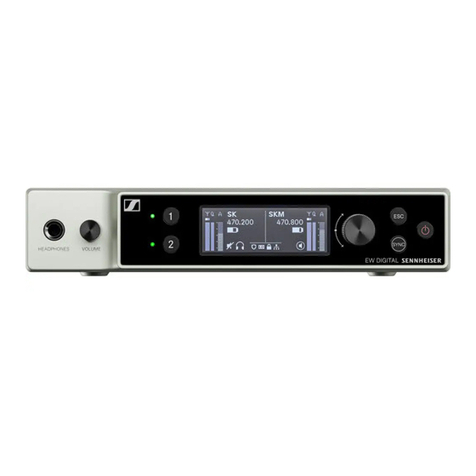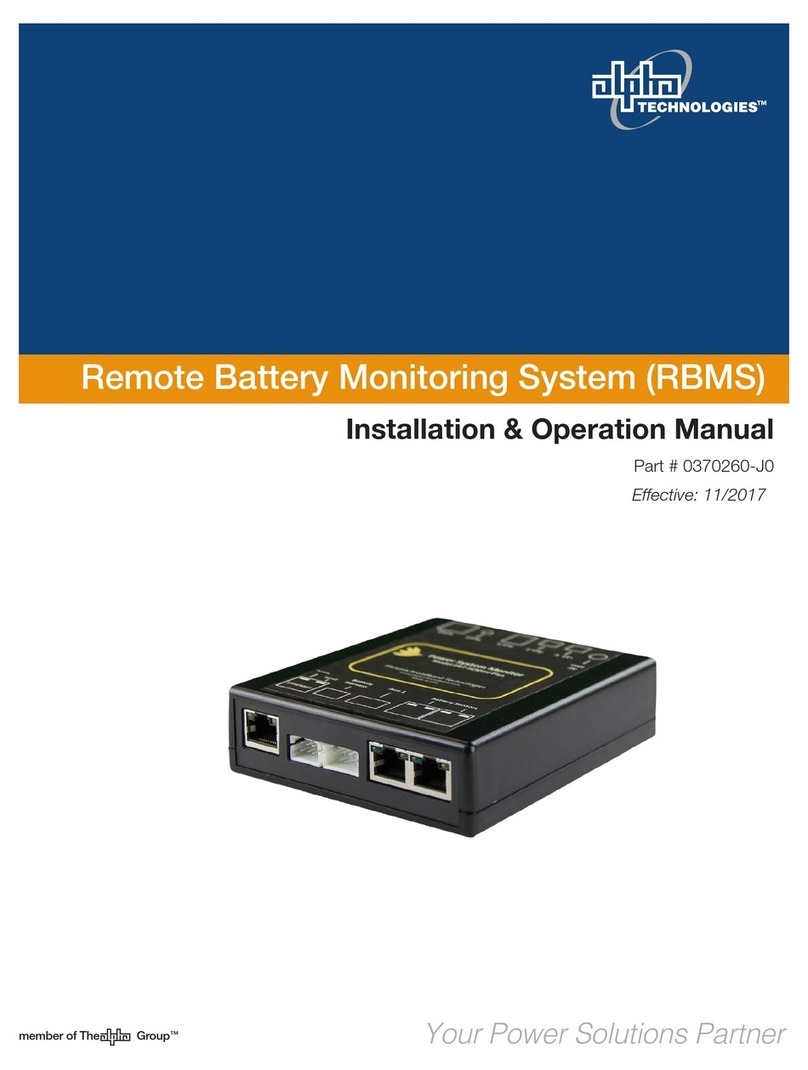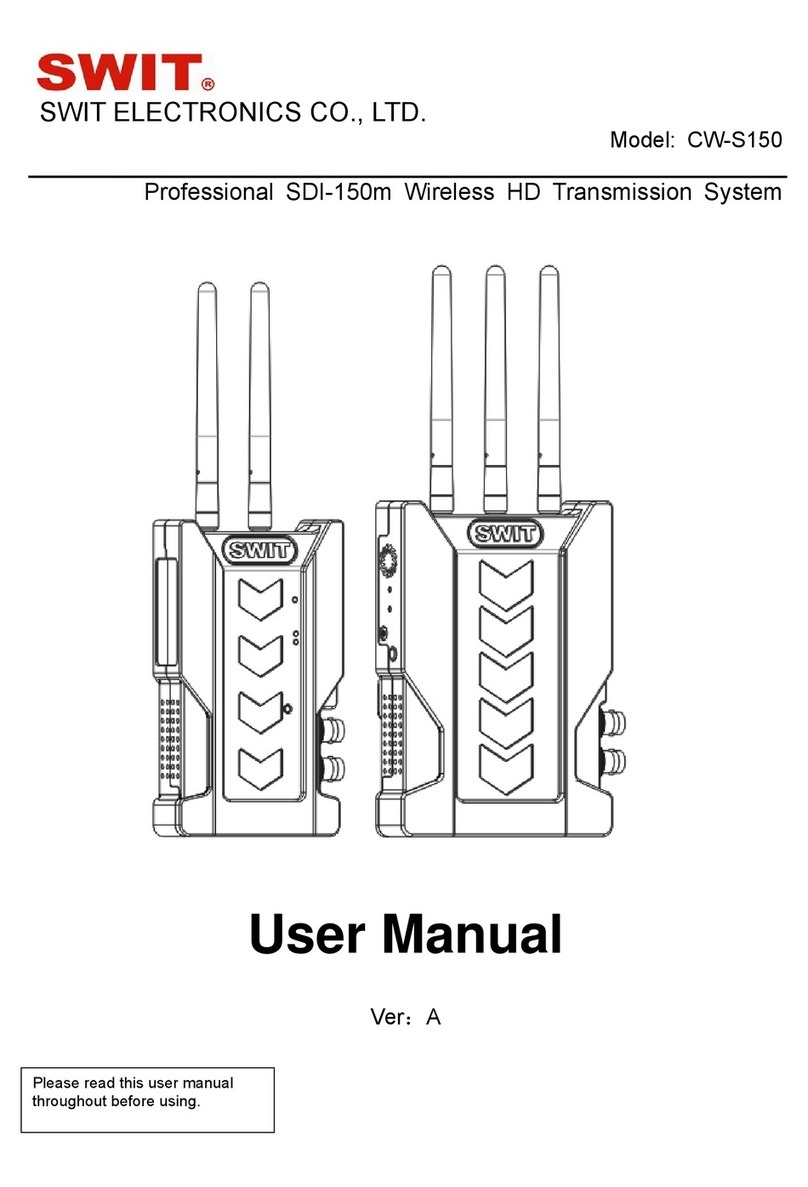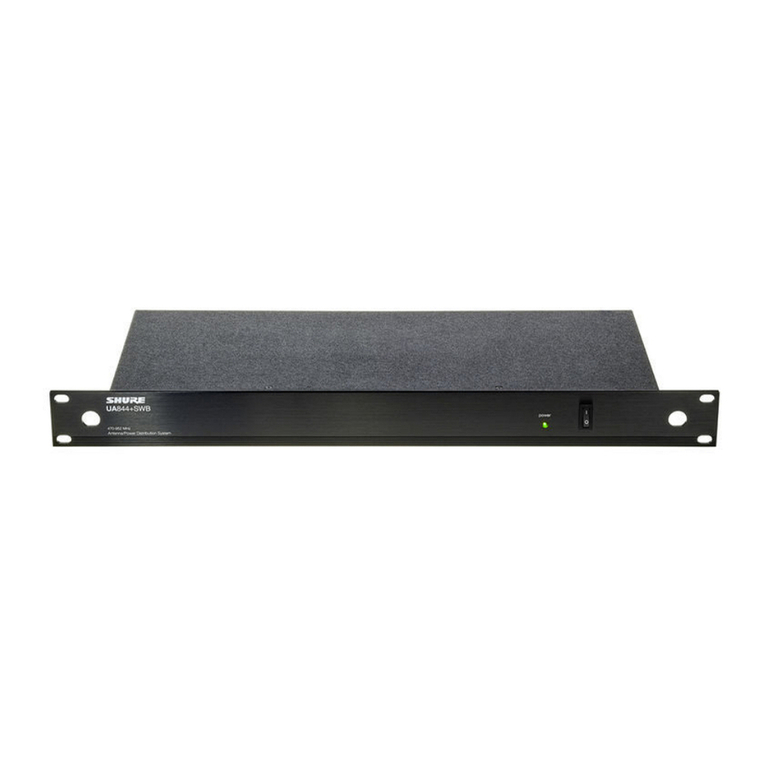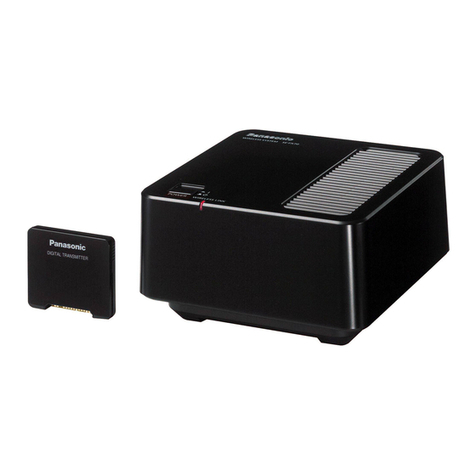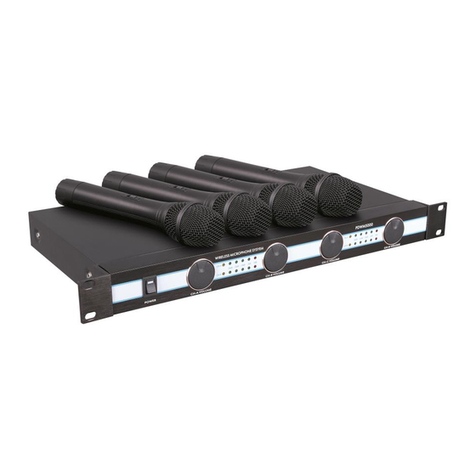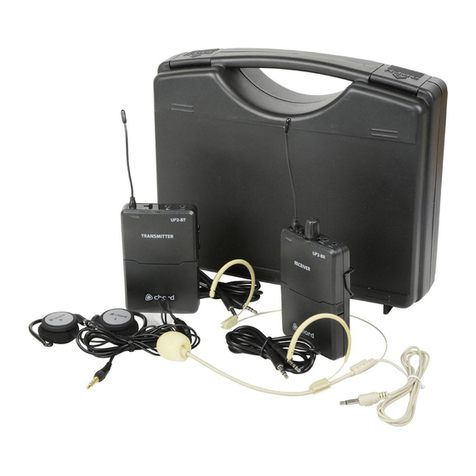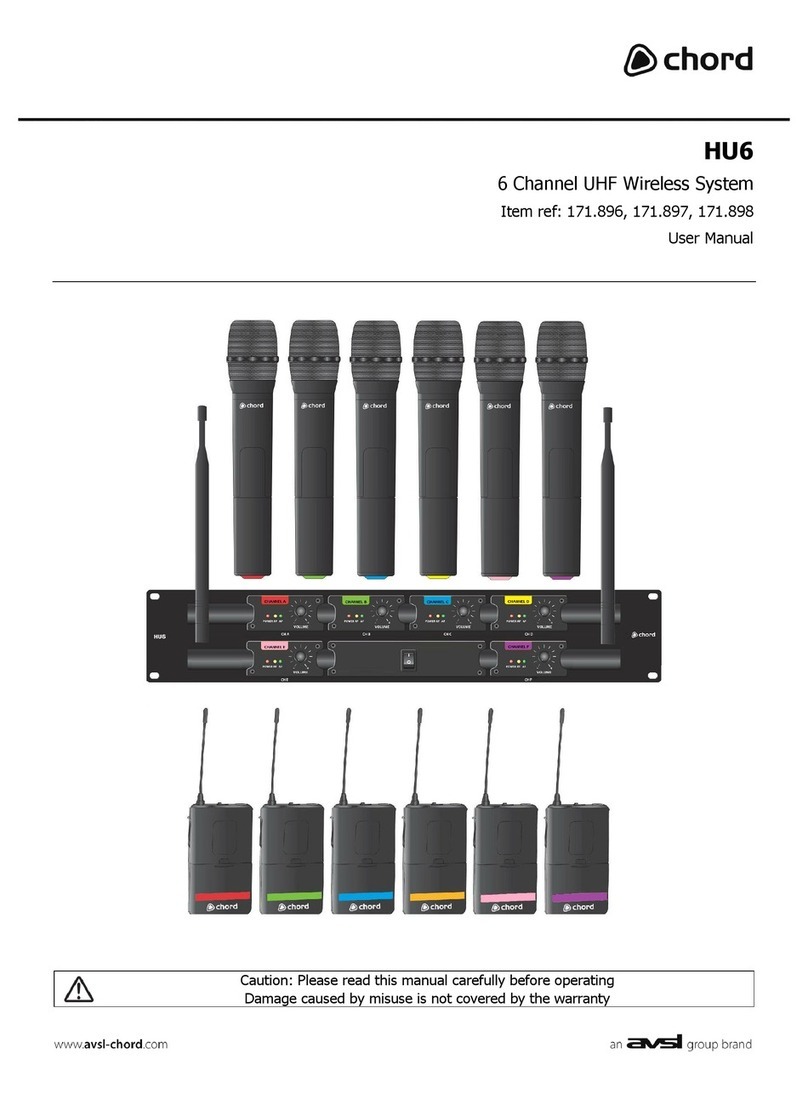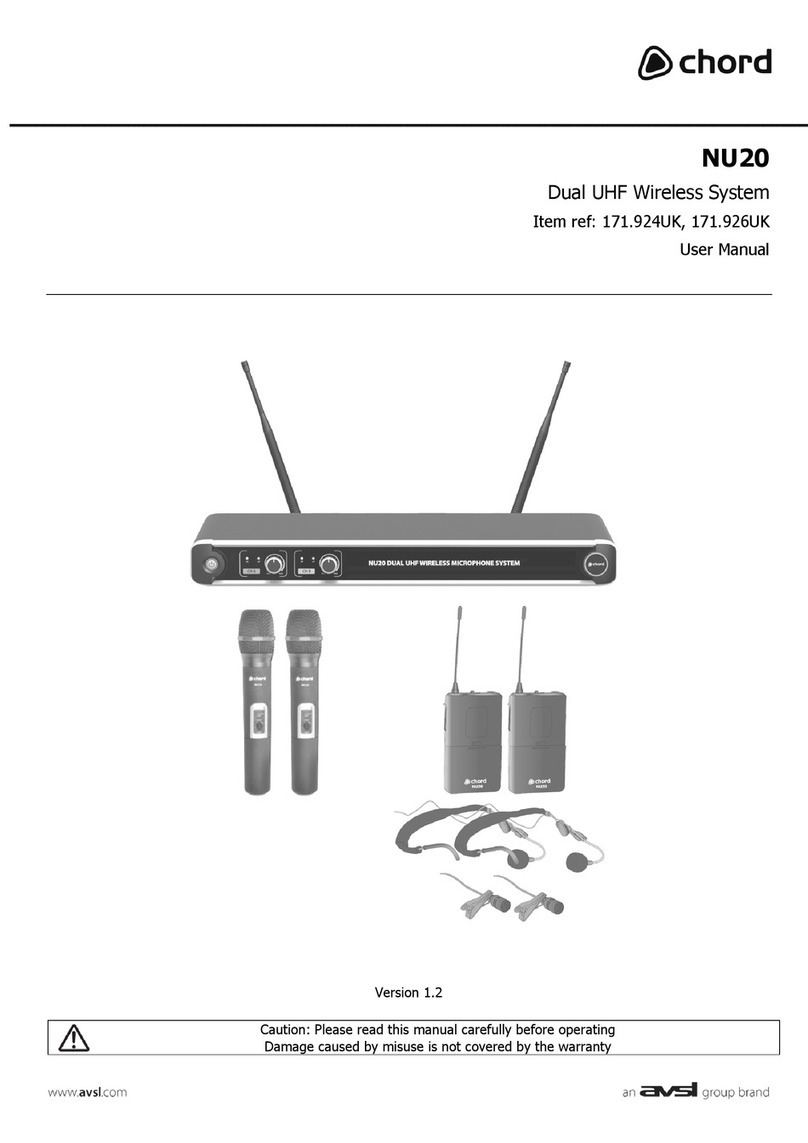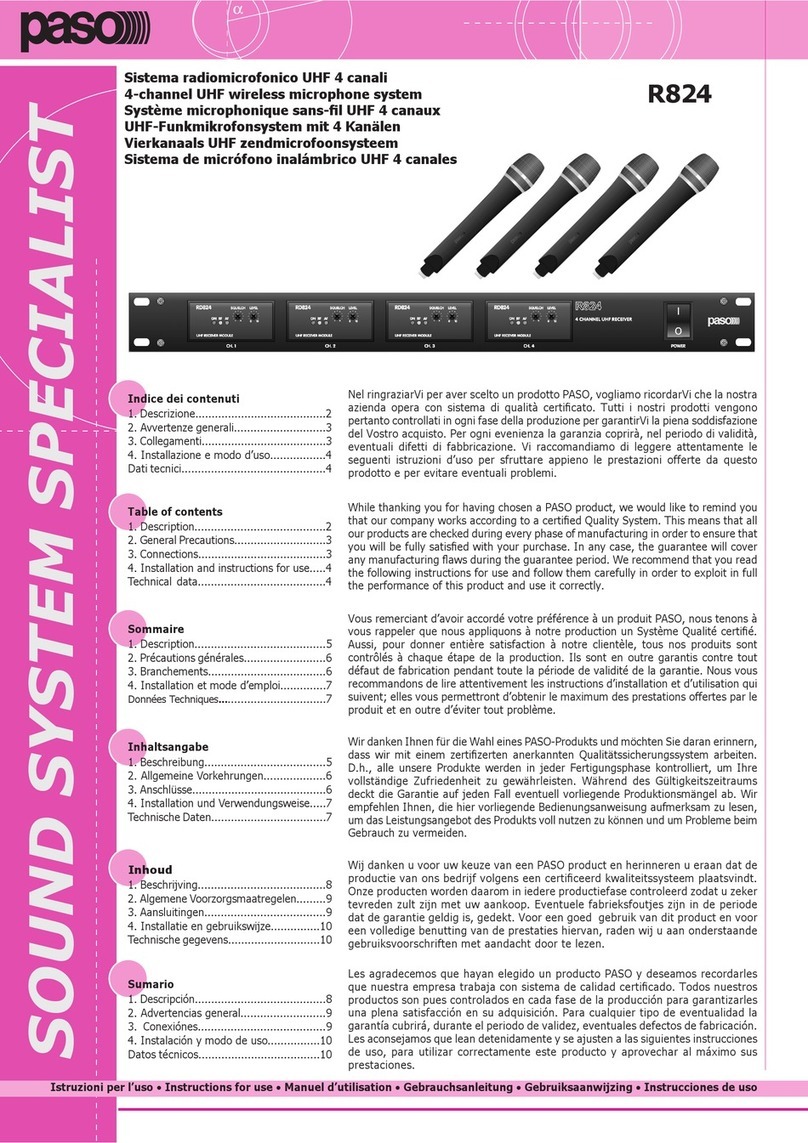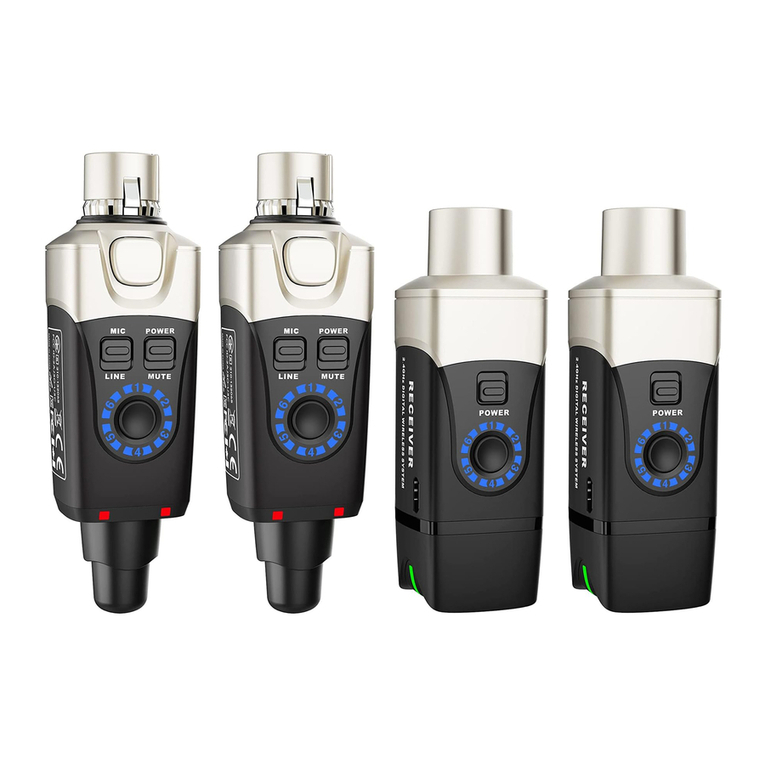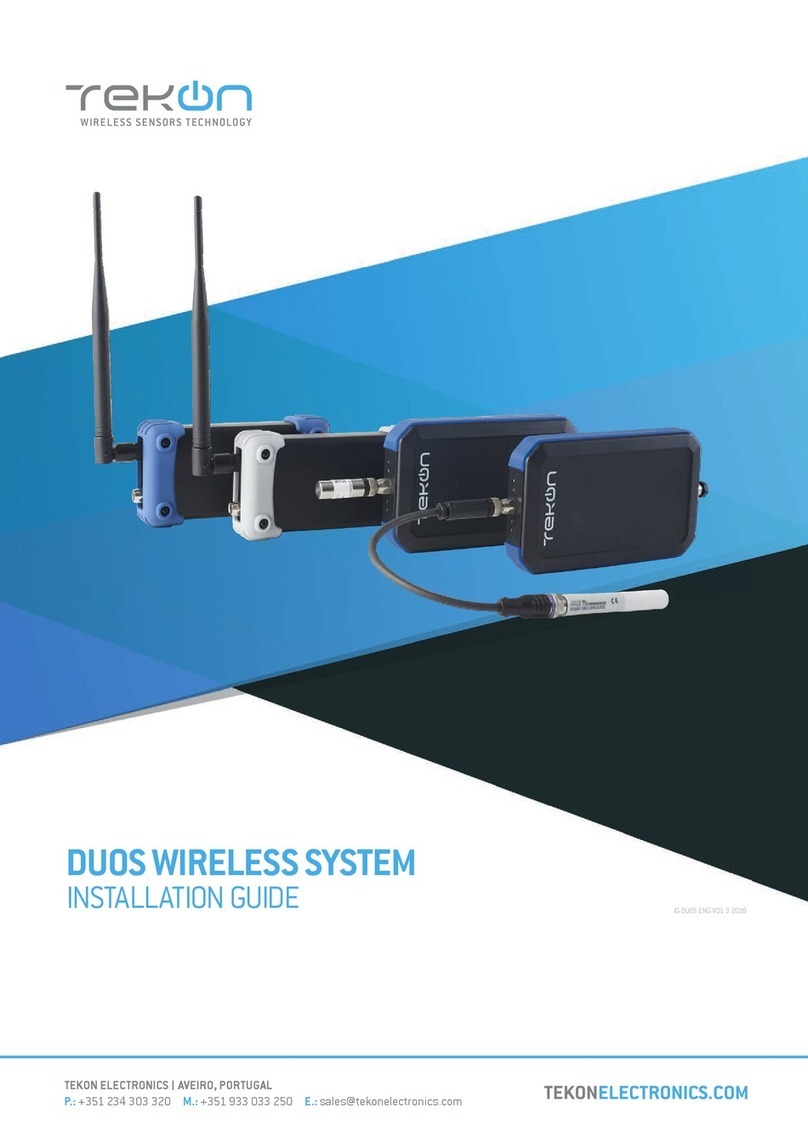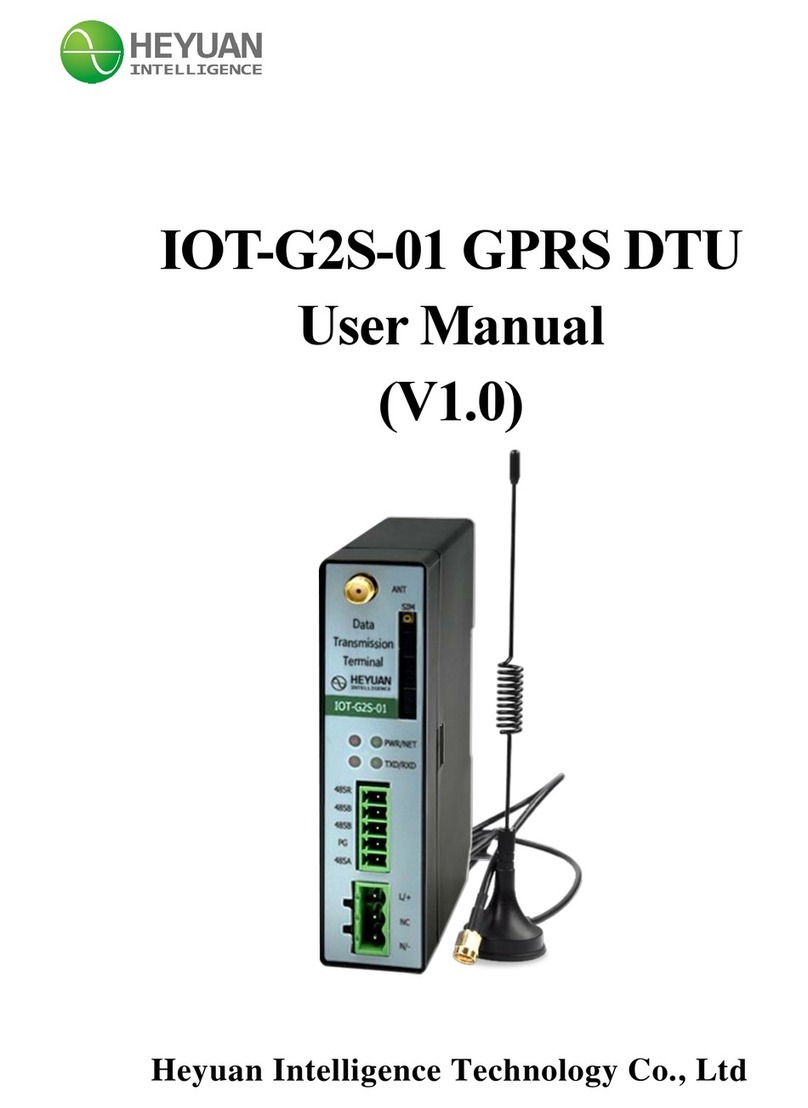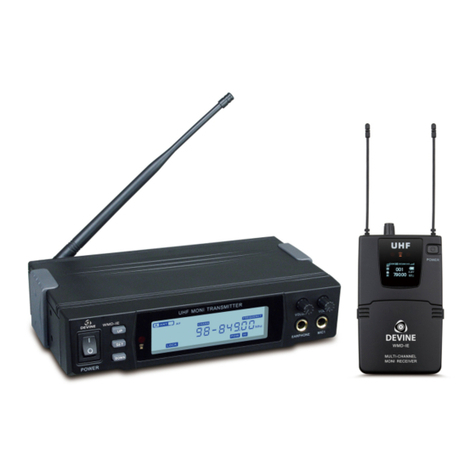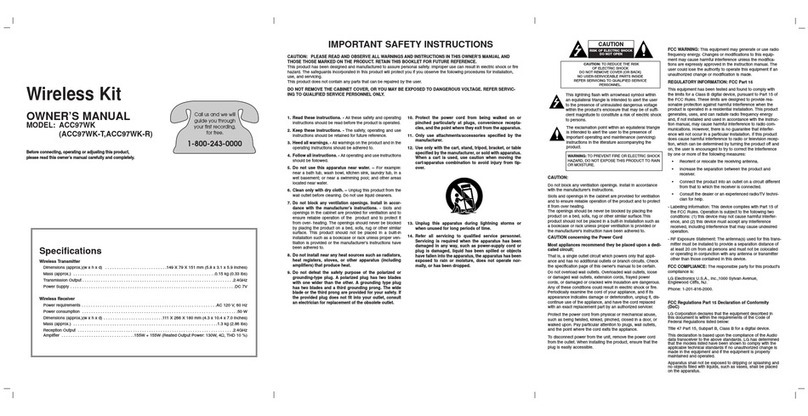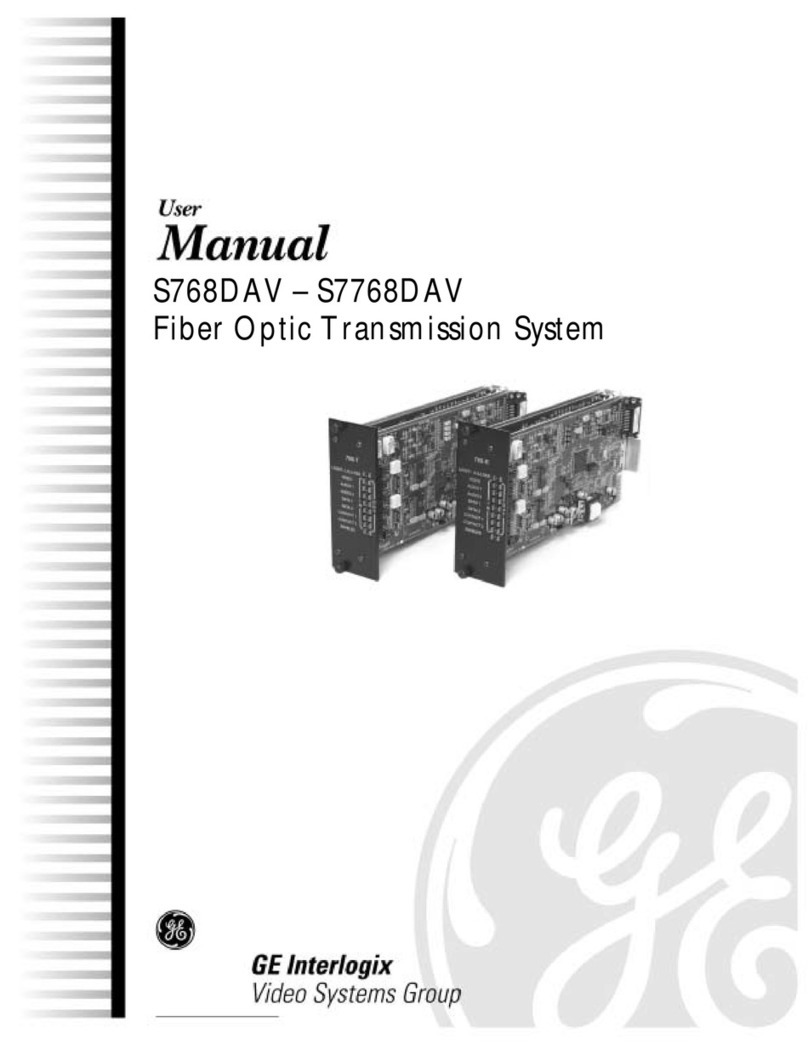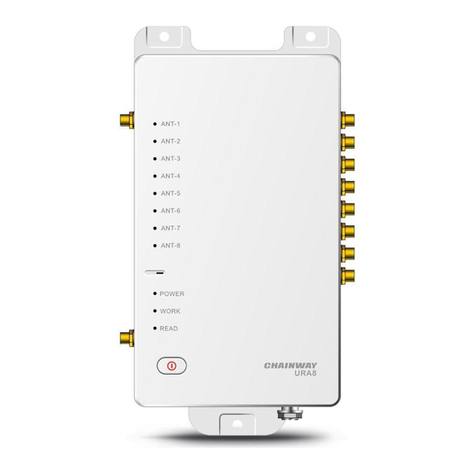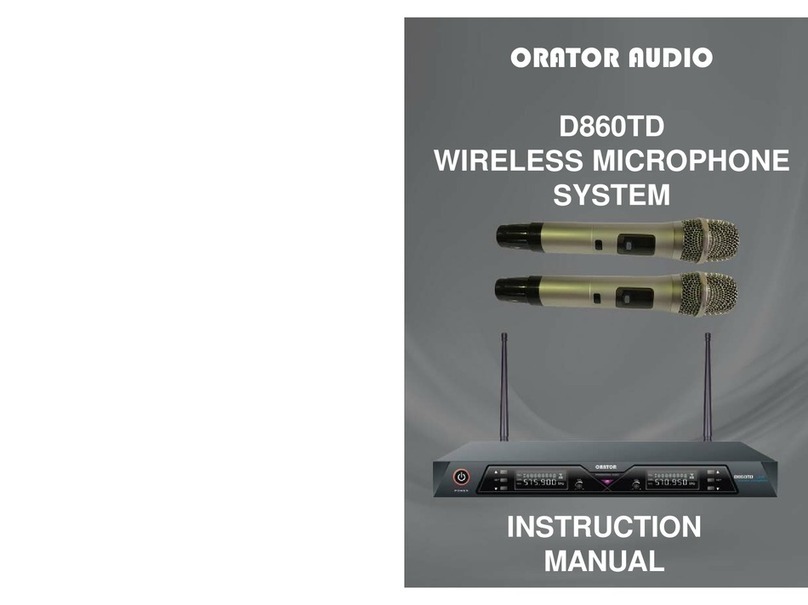UHF Wireless Systems User Manual
Operation
For handheld transmitters, insert the supplied 2 x AA batteries by carefully unscrewing the base to reveal the
battery compartment inside the microphone body, connect the batteries (ensure + and - are the correct way
round for each cell) and carefully screw the base back on.
For bodypacks, squeeze down the clip in the centre of the front panel of the bodypack to unfasten the lower
half, which hinges outwards to reveal the battery compartment. Position the supplied 2 x AA batteries inside
(ensure + and - are the correct way round for each) and then close the battery compartment flap until clipped
back into position.
Position the receiver within the best available line of sight to the transmitter(s) and connect the DC jack of the
supplied power adapter to the receiver and the plug-top to the mains outlet. Extend both antennae fully
upwards and outwards slightly and switch the power on. Turn microphone level(s) down on the receiver.
Note: for dual sets (with 2 transmitters), both microphones’ outputs will be mixed and fed to both balanced
and unbalanced outputs.
Connect the jack or XLR (optional) lead to the receiver’s audio output connector, turn down the volume of any
equipment (mixer, amplifier etc.) that the signal will be fed into and then connect the jack or XLR to the
equipment.
Warning! - take care not to point microphones towards speakers –this can cause damaging feedback (loud
whistle or howling noise) –try to point microphones away from the speaker cabinets.
Move the switch on the handheld or bodypack transmitter to the first notch (MUTE) –the LED should light
momentarily. If the LED stays on, this is indicating that the battery is low or discharged. Move on another
notch (ON) and gradually increase the microphone level(s) on the receiver, then increase the volume on the
mixer or amplifier until the sound from the microphone can be heard through the equipment.
During use, it may be useful for the reception of the microphone to be muted for a short period of time (e.g.
to avoid feedback when walking across the front of a speaker or avoid handling noise when placing the
microphone down momentarily or adjusting a neckband microphone). In these circumstances, it may be
better to move the transmitter switch to the “MUTE” position, which maintains the radio frequency carrier
signal but mutes the microphone input. When this switch is moved back to the “ON” position, the sound will
be immediately restored without waiting for the radio signal to be reinstated.
If the wireless system is not to be used for more than a few seconds, it is preferable to slide the transmitter
switch to the “OFF” position, which mutes and deactivates the radio signal and powers down the transmitter.
Be sure to turn down the volume of the mixer or amplifier and then switch off the receiver.
Unplug signal leads from the receiver and mixer or amplifier when moving or packing away.
If the system is not to be used for long periods of time, remove the batteries from the transmitter and unplug
the power adapter from the receiver and the mains outlet. Retracting the antennae can also help avoid
damage when the system is not in use.
